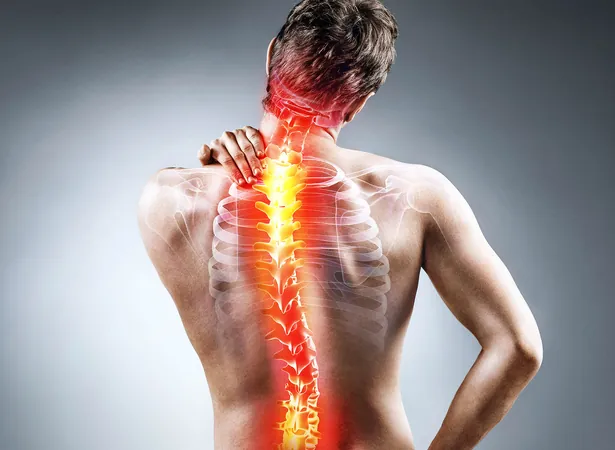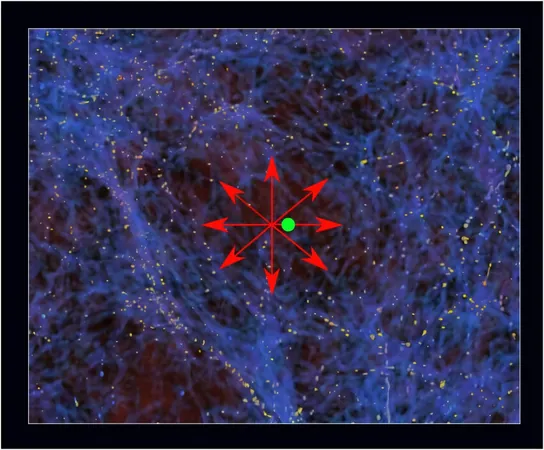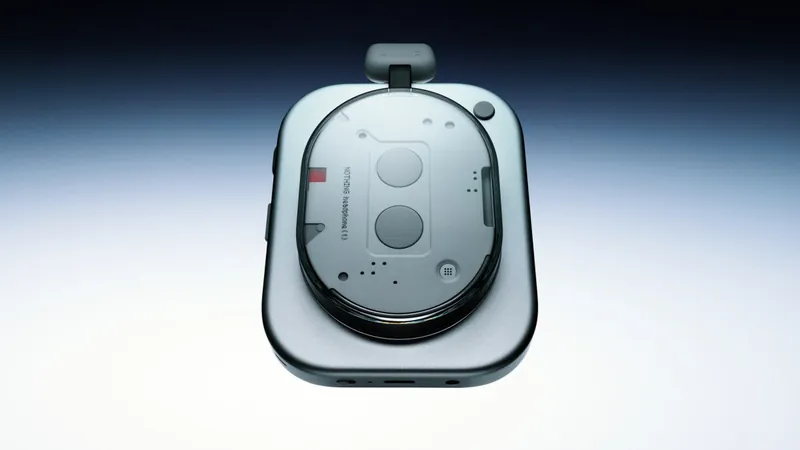
Breakthrough Pain Relief: A Game-Changer in Non-Addictive Methods!
2025-06-13
Author: Lok
A New Era in Pain Management
When knee or back pain strikes, many of us turn to the comfort of snacks, believing that a scoop of ice cream or a handful of chips can ease our discomfort. Surprisingly, scientists are revealing that this instinct may have a deeper connection to how we handle pain—a phenomenon known as ingestion analgesia.
The Science Behind Ingestion Analgesia
Recent research has spotlighted food's role in pain relief, suggesting that the simple act of eating could dull pain sensations. While prior studies focused mostly on the brain's reward system, new evidence points to the peripheral nervous system's involvement in modulating pain.
Introducing TRPV1 and D₂O: The Pain-Relieving Duo
Scientists have made a groundbreaking discovery by targeting TRPV1, a crucial ion channel linked to the sensation of pain. Rather than relying on conventional painkillers, this innovative approach employs heavy water (D₂O) to fine-tune TRPV1’s activity, effectively calms excessive pain responses without addiction.
Unlocking Comfort Food's Hidden Powers
Experiments show that even a bite of chocolate can reduce pain responses in rodent tests. This effect is linked to hormones released during digestion, particularly glucagon-like peptide-1 (GLP-1), which not only regulates blood sugar but also influences pain signaling. Although GLP-1’s natural lifespan is short, longer-lasting analogs are already helping those with type 2 diabetes and in weight loss.
GLP-1's Secret Weapon Against Pain
Preliminary studies suggest GLP-1 may also be capable of alleviating pain at the nerve endings, bypassing TRPV1's nagging hypersensitivity. TRPV1 acts like a molecular thermostat, becoming overly sensitive in chronic pain situations. Instead of shutting it down, GLP-1 appears to gently adjust its response.
Revolutionary Collaboration Brings New Insights
A remarkable partnership spanning Singapore and Beijing has revealed how D₂O interacts with TRPV1. Using advanced nanotechnology, researchers discovered that D₂O significantly reduces pain signals while preserving other vital nerve functions.
A Potential New Treatment Approach
The implications of this research are vast, laying the groundwork for advanced pain management strategies. By optimizing the effects of GLP-1 and D₂O, scientists aim to offer relief for conditions like neuropathic pain and osteoarthritis that too often rely on opioids or anti-inflammatory drugs.
What's Next? The Future of Pain Relief
Combining GLP-1 analogs with D₂O opens up a promising avenue: targeting faulty TRPV1 activity while maintaining the body's natural temperature regulation. This vision could transform the lives of millions suffering from persistent pain, paving the way for safer, non-addictive treatment options.
Conclusion: The Possibility for Change
While we await rigorous clinical testing and trials, this simple yet innovative concept may soon change how we think about pain relief. Imagine a future where the act of eating could inspire the next generation of pain management, requiring no prescription for comfort—just our daily meals.
For those interested in exploring further, the full study is available in the esteemed journal Nature Biomedical Engineering.





 Brasil (PT)
Brasil (PT)
 Canada (EN)
Canada (EN)
 Chile (ES)
Chile (ES)
 Česko (CS)
Česko (CS)
 대한민국 (KO)
대한민국 (KO)
 España (ES)
España (ES)
 France (FR)
France (FR)
 Hong Kong (EN)
Hong Kong (EN)
 Italia (IT)
Italia (IT)
 日本 (JA)
日本 (JA)
 Magyarország (HU)
Magyarország (HU)
 Norge (NO)
Norge (NO)
 Polska (PL)
Polska (PL)
 Schweiz (DE)
Schweiz (DE)
 Singapore (EN)
Singapore (EN)
 Sverige (SV)
Sverige (SV)
 Suomi (FI)
Suomi (FI)
 Türkiye (TR)
Türkiye (TR)
 الإمارات العربية المتحدة (AR)
الإمارات العربية المتحدة (AR)